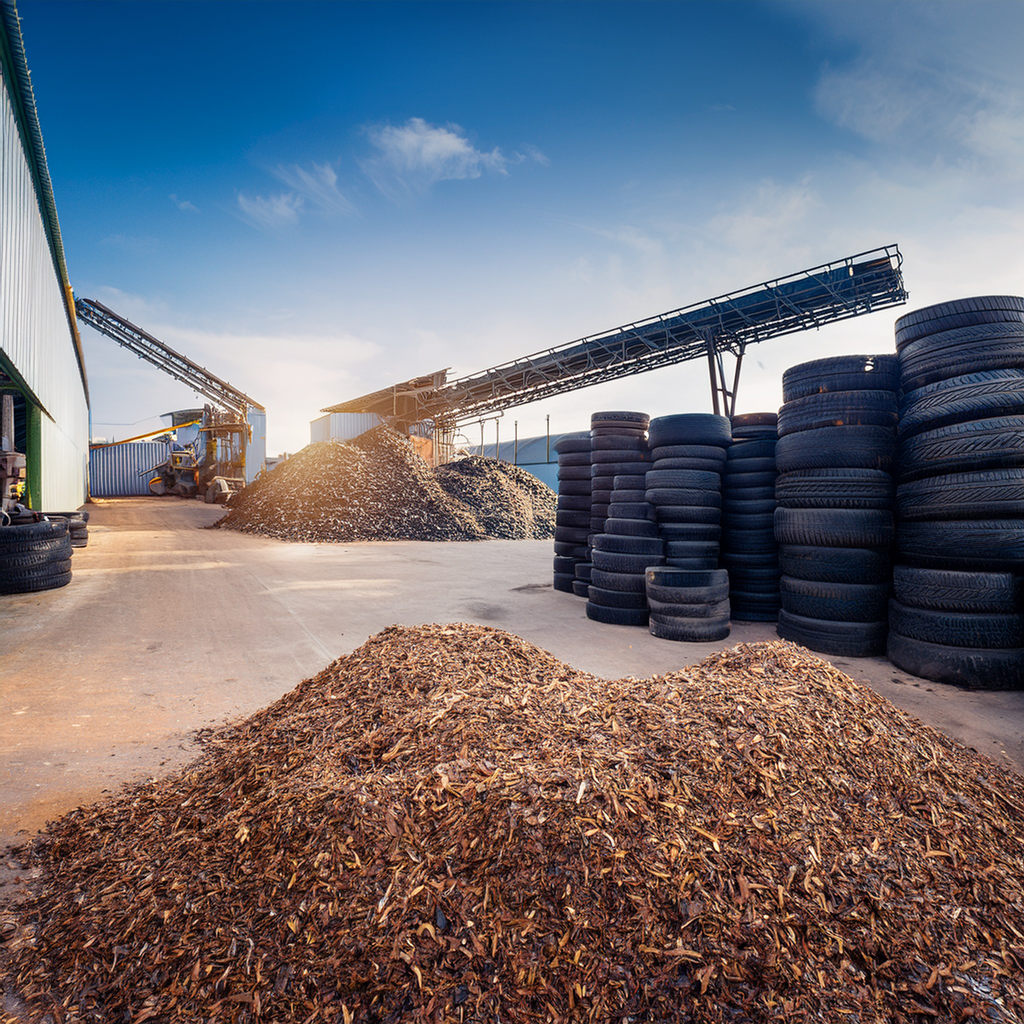Technology, Heat, and Pressure Put to Sustainable Use

Next Energy Fuels’ process of converting feedstocks like woody waste, SRF, biomass and waste tires into syngas yields a variety of useful fuels, namely Synthetic Aviation Turbine Fuel [SATF]. The pyrolytic oil can be further processed into ULSD.
The depolymerization process, which involves breaking down the feedstock, has the capacity to process 12K tons of crushed tires per year / per line. This technology results in the following annual outputs.
-
4,200 tons of Pyrolysis Oil: This is a form of oil produced through the process of pyrolysis, with a calorific value greater than 40KJ/kg. It can be used as an alternative fuel source, be refined into ULSD, or for various industrial applications.
-
4,800 tons of inert residue: This consists of carbon black and steel, both of which can be recycled and repurposed. Carbon black is a valuable material utilized in the production of ink, paints, plastics, and rubber products. Steel can be used in various industries such as construction, automotive and manufacturing.
-
3,000 tons of process synthetic gas (Syngas): Syngas, with a calorific value of 31 MJ/kg, is a versatile energy carrier made up of hydrogen, methane, carbon monoxide, carbon dioxide, water vapor, hydrocarbons, and condensable compounds. Its main pathway is to be converted into SAF, but can be used to produce electricity, heat, or further processed into chemicals, fertilizers, and liquid fuels.
